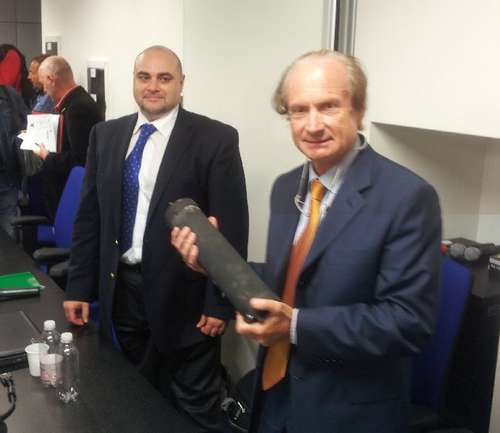Penon High-Temperature E-Cat Test Results Posted
Andrea Rossi, the inventor of the Energy Catalyzer, has shared the results of an extended test of a high temperature module. If the results are verified by the group of third party scientists working towards validating the technology, it could mean the "hot cat" is a true breakthrough with huge implications for all of human civilization.
|
|
By Hank
Mills
Pure Energy Systems News
(Composed on Oct. 12, 2012)
The most advanced version of the E-cat technology is called the "hot
cat." The technology can produce very high temperatures of over 1,000 C
and is alleged to produce kilowatts of power with a high coefficient of
performance (COP).
This Friday at an E-Cat conference in Italy -- the second such
conference dedicated to the E-Cat in two months -- Andrea Rossi shared
data from a test Leonardo Corporation (his company) performed on a hot
cat module -- separate from a parallel set-up being run by several
third-party scientists. The results, if confirmed independently by the
third-party scientists working towards validating the technology, seem
very impressive. These results have been shared with PESN.
Briefly, the reported results are:
| TOTAL ENERGY CONSUMED: 278.4 kW-h TOTAL ENERGY PRODUCED: 3,268 KW-h COP: 11.7 POWER DENSITY: 163,4 MW/kg |
| Sterling's Note: There is some controversy about how these data were calculated. |
On the Ragone Plot, this puts this reaction in the same region as
nuclear power -- another vindication that the terminology of "cold
fusion" is most likely a suitable, concise name for the phenomenon,
scientific politics aside.
The text of the report, as we received it, is posted at the end of this
article. In short, a high temperature module was operated for around two
weeks at an average, stable temperature of 1050 degrees C. Self-sustain
mode was utilized for a portion of the total length of the test.
Probably, I'm assuming, the drive was used for a couple hours and then
was turned off for an hour or so, but this is not specified in the
report. All we know is that it claims self-sustain mode was utilized for
a total of 218 hours out of the entire 328 hour test (not counting four
hours of warm up and four hours of cool down).
If I am interpreting the results correctly, it is asserted that without
factoring in self-sustain mode, an approximate COP of around 6 was
reached, and with self-sustain mode, the final total COP was over 11.
These results -- if replicated by the third party currently doing
similar testing -- make it seem likely that Rossi may be able to
guarantee the COP of six that he has spoken of for so long.
Rossi expects the group of third party scientists working on the hot cat
will reveal similar results when their official report is presented in
November. If this turns out to be the case, it will be exciting news for
all of us who have been following the E-Cat saga.
A cold fusion technology capable of producing high temperatures,
kilowatts of power, and a COP of six would be an enormous breakthrough
capable of being used to make this world a better place for all of us by
making sustainable, clean, and affordable electric power generation
possible. Let's hope the results presented by Rossi match what the third
party scientists, who are from multiple universities, conclude in their
report.
Here is Rossi's report: (slightly edited) [See also
E-CatWorld]
|
LEONARDO CORPORATION Date of the Report: October 9th 2012
DESCRIPTION OF THE REACTOR
SURFACE:
OPERATION
TEMPERATURES:
POWER EMPLOYED
TOTAL ENERGY CONSUMED
ENERGY PRODUCED
TOTAL ENERGY PRODUCED
POWER DENSITY
|
